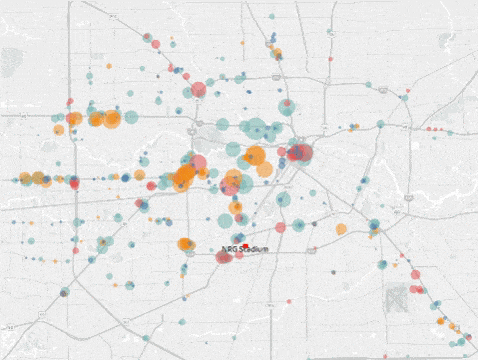Industry Insights
Reach More Tourists With Insights From Local Search Behavior
Consumers today expect the answers they find in search results to be relevant to their location and surroundings. This is especially true for travelers and tourists, who lack familiarity with local businesses and other public spaces, and who rely particularly heavily on mobile devices to navigate around their environment. Because consumers so frequently use search […]

Consumers today expect the answers they find in search results to be relevant to their location and surroundings. This is especially true for travelers and tourists, who lack familiarity with local businesses and other public spaces, and who rely particularly heavily on mobile devices to navigate around their environment.
Because consumers so frequently use search to find nearby physical places, search engines like Google now prioritize local search results as the default for many queries like "souvenir shop" or "best bakery," on both mobile and desktop — "near me" modifier no longer required.
According to Google, 46% of shoppers will go to a store as soon as possible after deciding they want a product — only 12% will wait until the next trip. So it's critical that your business details show up as the answer for that first search. When it comes to travelers and tourists, there may never be a next trip.
To reach more tourists, seek out local insights.
It's important to keep an eye on high-level trends and changes in consumer behavior, both online and offline. For example, Google redesigned its user interface (UI) for Hotel Search in October 2018, making it more conducive to browsing and booking hotel rooms directly through Google search. This change has affected the number of Search Views and Maps Views reported for hotel clients, as they have experienced uncharacteristically low impressions since it launched.
But it's equally, if not more important to be aware of the consumer trends happening in the local areas around your stores. You can uncover these local insights in a number of ways. Nothing beats talking to your local managers — these are your people on the ground, living and working in the communities in which you operate, and they are often your strongest resource when it comes to understanding local preferences, idiosyncrasies, and seasonal behavior changes. They'll also know better than anyone what types of travelers a certain neighborhood attracts, and what their common values and frustrations are.
You could also invest in a tool that lets you analyze local search behavior in your area, helping you identify patterns so you can adjust your offerings, hours, or staffing accordingly.
Sports championships, concerts, political rallies, arts festivals, and other special events are important to consider because they exist outside of typical recurring seasonality. People often come from far and wide to attend events like this — sometimes to areas that aren't used to serving tourists in such large numbers. For many neighborhoods, these are once-in-a-lifetime occurrences, so you'll have to look beyond your local business area for local insights.
Pay attention to local search behavior.
Our Data Insights team conducted a study to find out how local search behavior in Super Bowl host cities changes during Super Bowl weekend. Houston, the 2017 host city, for example, saw a 29% week over week increase in requests for driving directions to restaurants, and a 48% spike in requests for driving directions to retail stores. Houston also experienced a 27% week over week increase in requests for driving directions to banks on the Thursday and Friday before the game — almost 2x the national average.
 Requests for driving directions in Houston boomed the Saturday during Super Bowl weekend 2017, compared to the previous Saturday.
Requests for driving directions in Houston boomed the Saturday during Super Bowl weekend 2017, compared to the previous Saturday.
 Minneapolis, home of the 2018 Super Bowl, also saw an increase in demand for cash as tourists flooded the city for game day. Google Search Views for banking services in Minneapolis rose 8% week over week on the Friday before the Super Bowl, compared to a 20% drop the following Friday. And as fans prepared to tailgate, Google Search Views for markets and grocery stores in Minneapolis rose 14% week over week on the Friday before the game.
Minneapolis, home of the 2018 Super Bowl, also saw an increase in demand for cash as tourists flooded the city for game day. Google Search Views for banking services in Minneapolis rose 8% week over week on the Friday before the Super Bowl, compared to a 20% drop the following Friday. And as fans prepared to tailgate, Google Search Views for markets and grocery stores in Minneapolis rose 14% week over week on the Friday before the game.
By tapping into local insights, you can better understand store-level demand — which in turn can help drive foot traffic and sales. But only if you ensure that the important information about your business, like your address, phone number, hours of operation, and product or service offerings, is accurate and consistent across the many search engines, maps, apps, voice assistants, and social networks that tourists and other travelers are using to search.
Find out how adding local landing pages to your digital strategy can help you can meet evolving consumer expectations.
